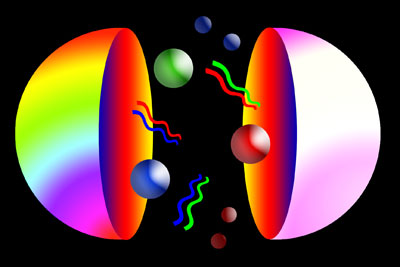Revelation of the Masses of Common Quarks
A research team, co-founded by G. Peter Lepage, a physics professor at Cornell, has determined the masses of the three lightest and, consequently, most elusive quarks: up, down, and strange.
Quarks, the fundamental particles constituting protons and neutrons, have been notoriously challenging to determine, especially regarding their mass. However, a research group co-founded by G. Peter Lepage, a physics professor at Cornell, has successfully calculated, with an exceptionally narrow margin of error, the masses of the three lightest and most elusive quarks: up, down, and strange.
The collaborative effort, involving researchers from various international institutions, has significantly reduced the uncertainty in quark masses by 10 to 20 times, achieving a few percent accuracy. Although the mass of a proton has been known for nearly a century, determining the individual masses of the constituent quarks inside it has remained a formidable task.

The strong force, which binds quarks together, is so powerful that isolating and studying them individually is currently impossible. Quarks coexist in a complex environment of other quarks, antiquarks, and gluons. To deduce the quark masses, the researchers needed a comprehensive understanding of the strong force. They addressed this challenge by employing large supercomputers to simulate the behavior of quarks and gluons within particles like protons.
Quarks exhibit an exceptionally wide range of masses, from the lightest, the up quark, which is 470 times lighter than a proton, to the heaviest, the t quark, weighing 180 times more than a proton, almost equivalent to the mass of an entire lead atom. The significant disparities in quark masses pose a major mystery in theoretical physics, leaving unanswered questions about why quarks possess mass. Lepage noted that the new Large Hadron Collider in Geneva was constructed to explore and address this specific question. According to their findings, the up quark has a mass of approximately 2 mega electron volts (MeV), the down quark weighs around 4.8 MeV, and the strange quark has a mass of about 92 MeV.
This article is republished from PhysORG under a Creative Commons license. Read the original article.
Do not forget to share your opinion with us to provide you with the best posts !




0 Comments